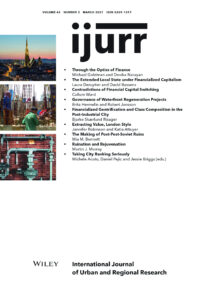This article takes its point of departure from research debates about how waterfront regeneration projects are rooted in urban entrepreneurial governance that involves local boosterism and high demands on management of funding and financial risks. The empirical study investigates two second‐tier cities in Sweden. The study illustrates that the projects for the two cities are managed in quite different ways. This confirms the importance of recognizing that urban processes are conditioned by the local configuration of actors and practices. The concluding discussion also emphasizes the multi‐layer structure of the public sector. It is suggested that the quite uneven distribution of national infrastructure investment is detrimental to the potential of wider development effects of waterfront generation projects for second‐tier cities. Thus, although this article shows that the model for large‐scale waterfront regeneration projects is on one level viable for cities on the second‐tier level of city systems, it must be remembered that the effects on the wider urban development may diverge from the effects of such investments for first‐tier and larger urban centres.
Details
Written by:
Brita Hermelin & Robert Jonsson
Digital Object Identifier (DOI)
10.1111/1468-2427.12966
About DOI

